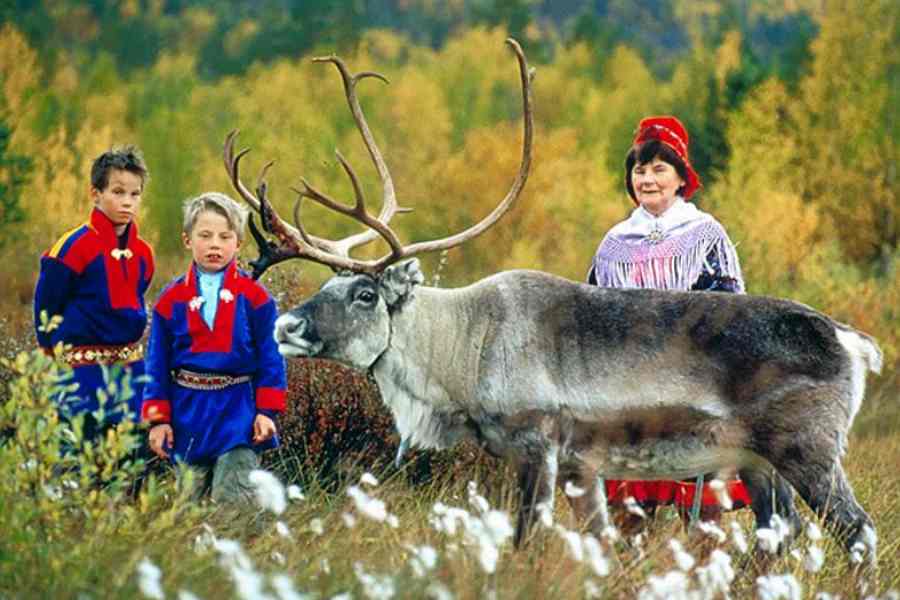STOLEN: A NOVEL By Ann-Helen Laestadius, Bloomsbury, £18.99
Stolen, translated by Rachel Willson-Broyles, begins with a hate crime. Elsa, a nine-year-old Sámi girl, witnesses the brutal murder and mutilation of her reindeer calf by a knife-wielding man as she hides behind the trunk of a pine tree. The man has hacked away at the outermost part of the ear of the animal which bore the mark of her owners. As Elsa watches the scene with horror, the man realises that he is not alone. In a final intimidatory gesture, he touches a finger to his lips and then draws it across his throat. The murder of Elsa's beloved Nástegallu stirs anger and terror in equal measure which she would suppress for years to come.
"I don’t think anyone who doesn’t have reindeer can really understand. It hurts... We don't just work with the reindeer, they’re part of our way of life." From the onset, it is made amply clear that the hunting of reindeer is an attack on indigenous Sámi livelihood and culture. The perpetrator is a Sámi-hating poacher who kills out of resentment towards the Sámi people and their land-use rights. Ann-Helen Laestadius, who is of Sámi and Tornedalian descent herself, notes that the premise of the novel draws from real life events that have plagued the Sámi territory of Sápmi for years. There are more than 100 such registered incidents but none of them has led to prosecution.
It is not just prejudice and police apathy that threaten indigenous life in the Arctic Circle. Elsa's family ties of kinship and the prioritisation of a life structured around reindeer-herding honour an ancient way of living but the Sámi now face several hurdles. Children from the Sámi school are bullied by those from the Swedish-speaking school next door; the Sámi are derided for their livelihood choices and for favouritism by the government by the non-Sámi. As a result, many young people suffer from suicidal depression to the point that they are "overrepresented" in the statistics — Elsa's second cousin, Lasse, takes his life. Then there is the threat of global warming that has a direct bearing on life in the Arctic. Furthermore, sexist attitudes among the Sámi restrict women's participation in leadership roles or ownership of herds. Thus, when Elsa reports the reindeer deaths to the police, she has to face the criticism of older male herders who view her as a nuisance.
The rights of the Sámi people, much like those of other indigenous communities around the world, are recognised by the government and enshrined in the Constitution but their execution remains poor. The police think they have better things to do than investigate the killings of domestic reindeer whose maiming and slaughter are only classified as 'theft'. Elsa is thus left to face the monster on her own.
Stolen, in spite of its languid pace, is a thriller reminiscent of the classic Nordic noir. The uniqueness of the book lies in the choice of the community the author represents and the nature of the crime. Laestadius also beautifully brings to the reader slices of Sámi tradition like the joik, a form of song in Sámi music, as well as the philosophy that governs their lives. Elsa woefully declares that "[B]eing Sámi meant carrying your history with you..." because "... how could you choose not to bear your family's history and carry on your inheritance?" It is this conviction that keeps Elsa committed to the protection of her people, the reindeer and their shared way of life.











